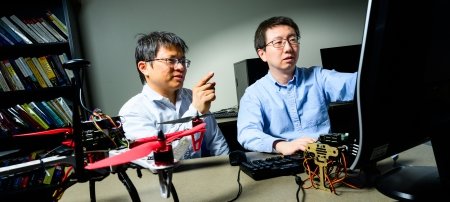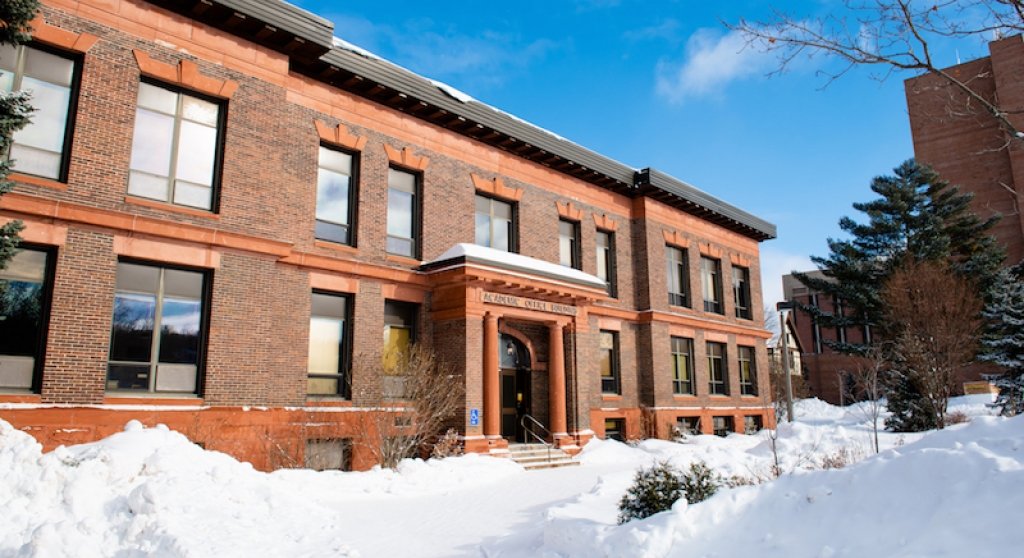For this installment of On the Table, our guests came and went as they could, discussing management information systems (MIS) and the implications of—and opportunities in—the flood of data in which we’re floating.
The plaza is half-full in the afternoon, bright with sunshine, a few umbrellas helping to calm the glare. This is a thoroughly modern scene, tablets and smartphones everywhere. Visitors are updating statuses, reading the news, sharing photos with friends. But it’s only a small sliver of data in the big picture, and industry is still trying to figure out what to do with all of this information. In Paris, the zeroes and ones might be of philosophy or politics. On Capri, of yachts or automobiles. Vienna’s
"I'd much rather hang out in a café. That's where things are really happening."

Schanigartens are closest in nature to the new John Rovano Plaza outside of the Van Pelt and Opie Library, where I’m sitting this afternoon. They are places where the public and the private merge. Today, some of Michigan Tech’s experts on management information systems (MIS) stop by to reflect on a similar merging of public and private to a Schanigarten: how data and people come together, and where information and privacy meet.
Mari Buche, associate professor of management information systems, notes the unique place MIS inhabits in the business world. “We’re in that space between people and technology,” she says.
“We’re a bridge,” Cassandra Diers confirms, explaining how MIS turns piles of data into information upon which businesses can take action. Diers is an undergraduate student in MIS, and what attracted her to the field was the array of opportunities it provides. “I don’t want to be stuck at a computer all day. I want to be out there, talking to people."

Russell Louks, professor of practice in the School of Business and Economics and a veteran of Ford among other industry leaders, takes a moment to pause and reflect on what he looked for while recruiting information specialists. “I recruited for attitude,” he explains. “And that’s what I’m doing with my teaching. I can teach technology. That takes time, but it can be learned. I can’t teach attitude.”
Organizations around the country are recruiting for attitude, too. We see it at each career fair here at Tech: businesses need not only employees with training, but they need minds who can think beyond just the numbers, who can put the opportunities in that data to work. “You can’t run any kind of business without information technology,” Louks says, thinking of how the information revolution has changed the playing field. “Anybody with data has the need for MIS.”

Yet, much like the different flavors of cafés around the world, each university handles MIS differently. “Other universities handle the balance between people and data as extensions of accounting or marketing,” Buche explains. “Our MIS program is really a STEM (science, technology, engineering, and mathematics) program.” STEM is a huge trend throughout education, an attempt to train a new generation savvy in the technical areas future industries will explore. “I call it iSTEM. STEM is an interdisciplinary approach rather than fields existing in silos.”
By silos, Buche is referring to the way fields can get walled off from each other. This new approach is more educationally holistic and is reflected in the way Buche and Louks have crafted the MIS curriculum. “So many of my classes cross boundaries with each other,” Diers explains. “There might be five or six courses all working together on the same project. We’re all working on different parts of it, but we also learn what each other does.”
“It’s cool to actually watch it happen.”
One of the biggest challenges to an MIS curriculum—and anyone working in information technology—is the rate of change. Even textbooks a couple of years old quickly become obsolete.
“We got to data and usage in one class, and the numbers were expressed in gigabytes of data,” Louks says, laughing. “That was just a couple of years ago, and now we’re talking in terms beyond terabytes (about 1,000 gigabytes) and into petabytes and zettabytes.”
For Diers, still a few semesters away from graduation, the fruits of this curriculum are already evident to her internship supervisors. “One of them said, ‘How are you this organized? You’re just an intern,’” she recalls. “My other supervisor commented that they’d never had an intern jump into a project without being asked. But that’s what we’re supposed to do, isn’t it? When I find a space where I can help, I just do it.”
Buche, Louks, and Diers all depart, filtering into the once-hourly sea of pedestrians across campus. The mix of café denizens changes a little bit, taking in the sunshine over social networking, lab reports, and a few daydreams.
Later in the afternoon, Ashley Sudderth stops by, taking a few moments between meetings to talk data and security. Sudderth is the information compliance officer at Tech, making sure faculty and staff alike are well aware of the heavy responsibilities of data security.

“Don’t let anyone say that communication isn’t important in information technology,” she quips, remarking on her busy afternoon. “We have more meetings than anyone.”
Sudderth is local: she grew up in Painesdale, just south of Houghton. Her former next-door neighbor found her way into MIS at Tech as well, and these two professionals met up for dinner, a chance to reflect on their careers.
This dinner was in Shanghai. “Two neighbors from Painesdale, MIS majors, and we find ourselves in the same place in China,” she says. “What are the odds, right? But we couldn’t have gotten here without our education and the doors that education opened for us.”
Sudderth moves on to her next meeting, merging into the flow of traffic, headphones and smartphones, pulses and bytes. Our guests are back to work, trying to tame the flow of information, finding challenge and opportunity in its midst.
Michigan Technological University is an R1 public research university founded in 1885 in Houghton, and is home to nearly 7,500 students from more than 60 countries around the world. Consistently ranked among the best universities in the country for return on investment, Michigan's flagship technological university offers more than 185 undergraduate and graduate degree programs in science and technology, engineering, computing, forestry, business, health professions, humanities, mathematics, social sciences, and the arts. The rural campus is situated just miles from Lake Superior in Michigan's Upper Peninsula, offering year-round opportunities for outdoor adventure.




